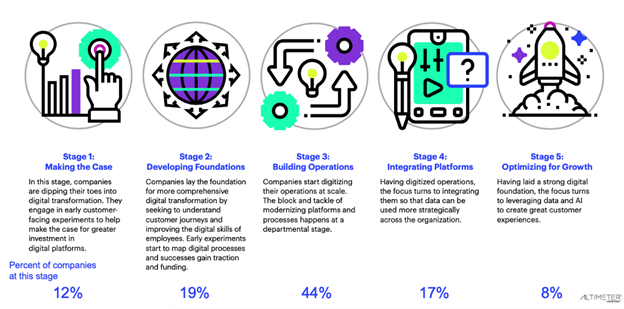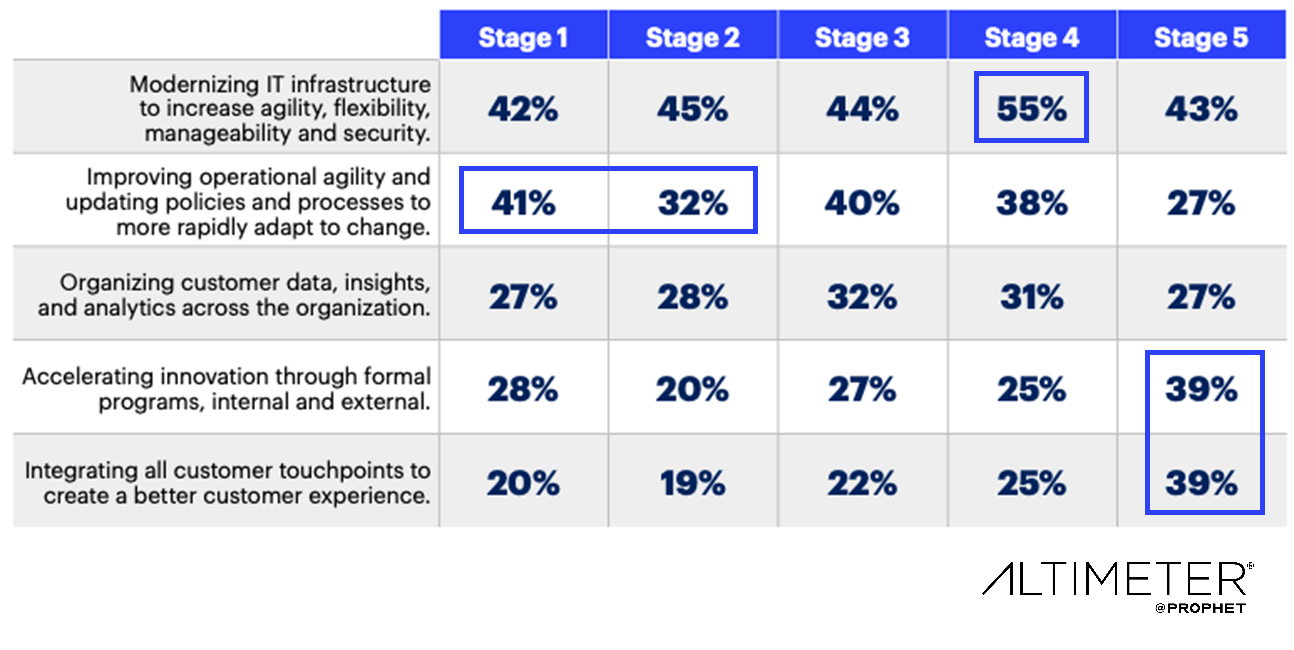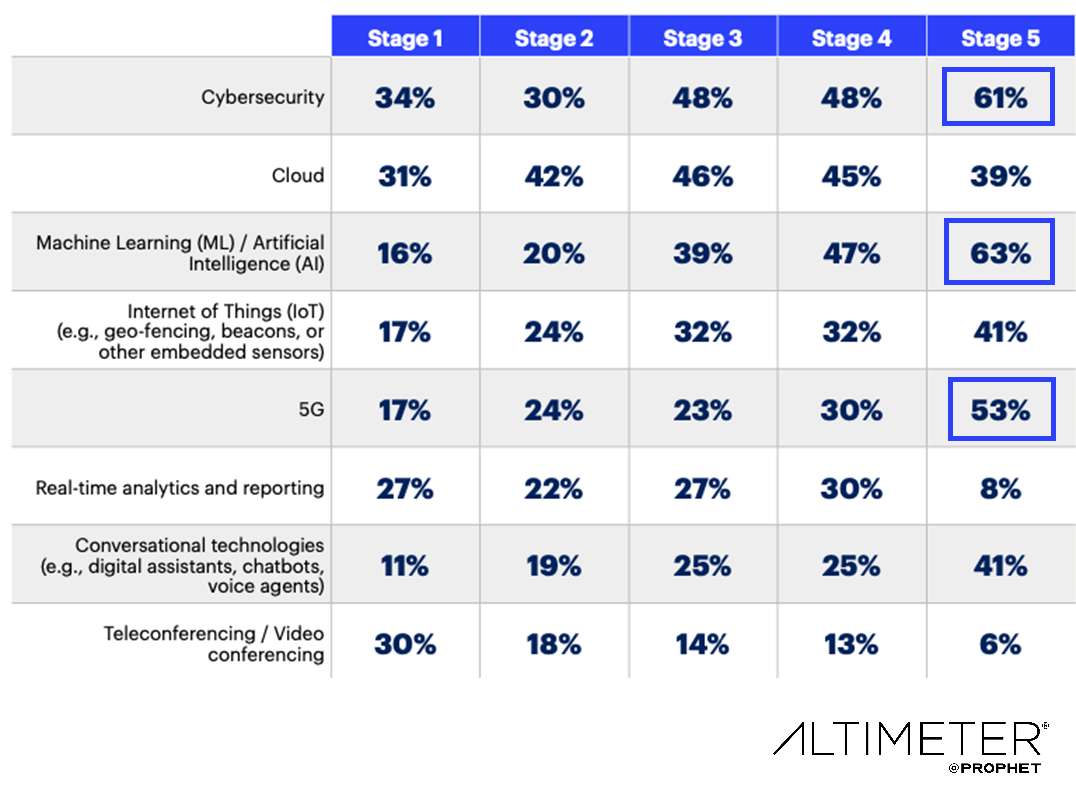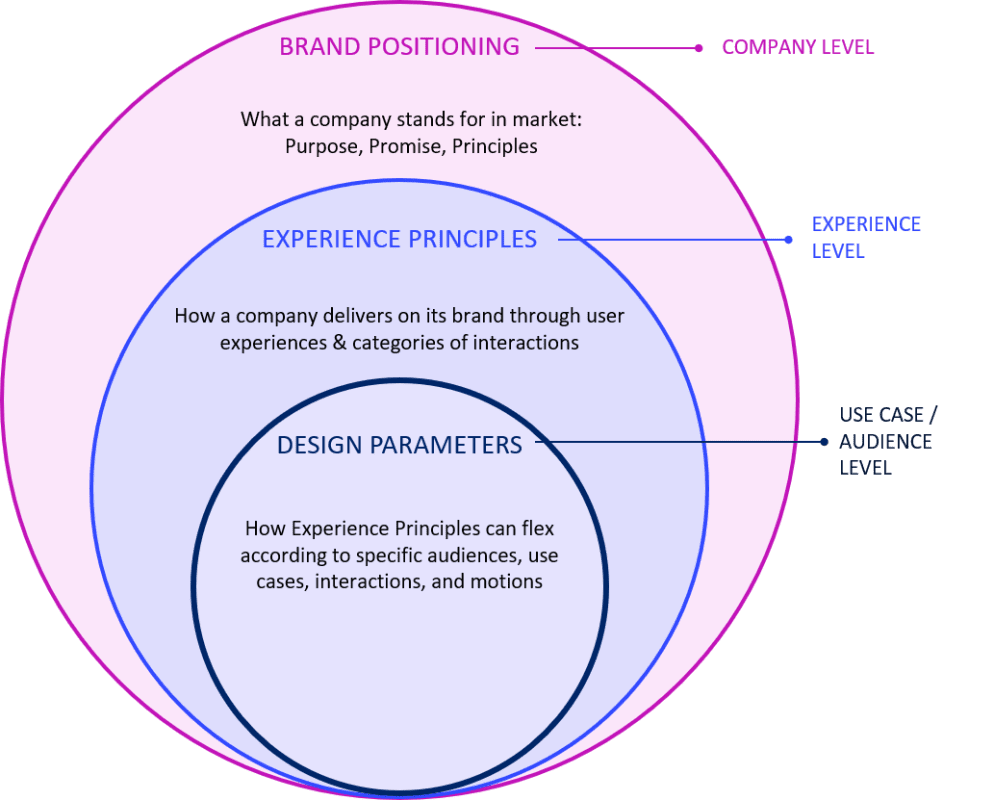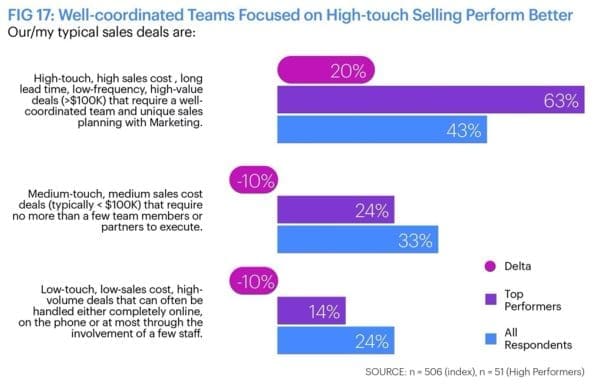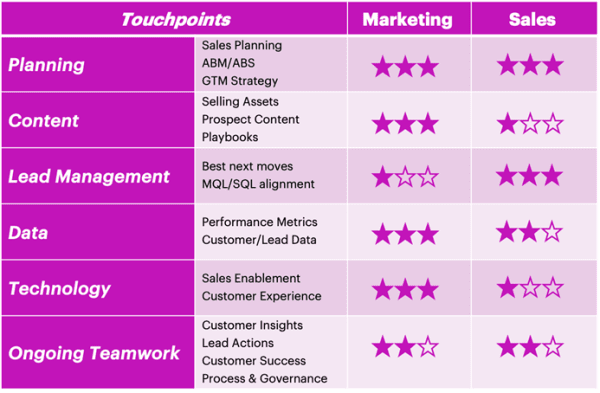BLOG
Business Transformation for Growth: Three Rules you Can’t Ignore
How customer-first thinking, sharpened digital strategy and renewed purpose drive high-impact change.
Companies are aggressively pursuing business transformation to drive top and bottom-line growth and establish a more effective business model for the future. The pressure for reinvention feels increasingly urgent as organizations look to find their way past the turbulence of the pandemic. Markets are fluid, technology is shifting and people are demanding more digital solutions than ever before.
Companies that settle for incremental progress simply won’t be able to keep up with fast-moving customers. Companies that embrace this new landscape, however, can achieve uncommon growth – purposeful, profitable, transformative and sustainable. With agile and adaptive approaches to transformation, they can uncover new sources of revenue and relevance in record time.
“When a company’s purpose is clear, that North Star illuminates everything they do. It informs an approach that bridges corporate purpose with its promise to customers.”
Business transformation for growth isn’t easy and companies, especially ones burdened by unsuccessful transformation efforts, are justifiably reluctant to try again. Another common barrier is knowing where to focus and how to start. Too often, leadership gets derailed by decisions about technology. However, all transformation efforts – even ones undertaken as digital transformation – aren’t about tech. They’re based on people.
Taking a human-centered approach to transformation, and working with a variety of organizations in multiple industries, has shown us that no matter what the goals are, companies must follow these three rules of transformation to achieve sustainable growth.
Three Ways To Approach Business Transformation
1. The Customer Is Everything
Companies have been giving customer-centricity lip service for years, but they often fail to appreciate its transformative potential. When organizations put this objective arbiter – the customer – at the center of all decisions, it provides clarity and focus.
This requires an organizational obsession with customers and potential customers. What makes these people happy? What ruins their day? What can your organization do to help their lives run more smoothly? What makes them trust you? What inspires them?
As this customer focus permeates an organization, it gets easier to stop thinking about just selling products and shifts the focus to serving holistic customer needs.
Using this lens, companies can analyze demand opportunities and create a customer value matrix, complete with specific, measurable, time-bound goals. This allows them to identify, prioritize and activate initiatives that deliver on this strategy.
Customer-centric companies don’t spend much time fixing potholes in a customer journey. They don’t have to. Instead, they’re looking for ways to leapfrog expectations. And they also become more adept at changing course, quickly abandoning areas that no longer serve customers.
2. Be a Digital-First Company. But This Time, Do It Right.
All transformation is digital, and companies have known that for decades. But even as businesses invest trillions in digital transformation, they still fail more than they succeed. In our view, that’s because they fall into the trap of thinking technology is the answer. It’s become clear, that tech alone isn’t the answer. The goal is to become a digitally built business, which requires people who use digital-first thinking.
Digital transformation can only succeed when it focuses on people. To be effective, they must transform value drivers that impact others, including both external experiences and internal ways of working.
Companies can begin by setting an overall digital vision that resonates with both customers and employees. That vision requires a clear understanding of which areas will drive the most business and value, complete with specific, measurable objectives validated by key results.
Of course, the technology involved is a critical element, but the bigger issue is about the people in an organization. Do they have the right skills? Are they led and incentivized in a way that allows them to be digital-first? How are they recruited and retained? How does the culture flex and evolve to position the organization for growth in this digital-first world?
With clarified digital goals, companies can begin to iteratively deliver new products, services and experiences. They can regularly re-evaluate strategy and tactics based on key results and customer input.
3. Build an Agile, Purpose-Driven Organization
Companies that know what they stand for are inherently better at customer obsession and building businesses digitally. When a company’s purpose is clear, that North Star illuminates everything they do. It informs an approach that bridges corporate purpose with its promise to customers. This commitment to the customer, with investments aligned to support it, is the growth lever. It creates greater relevance and impact in the market.
This past year has demonstrated just how critical it is to have a clear and authentic purpose. It must resonate with every stakeholder group – not just investors and employees but also customers and members of all its communities.
Today’s consumers, especially millennials and Gen Z, want to do business with companies that make the world a better place. They want to see companies commit to sustainability, diversity and fairness. And they’re demanding increasing transparency. Consumers can forgive brands that make and admit their mistakes. but as soon as they catch a company putting profits ahead of purpose, they’ll move on.
Achieving this agility and commitment to purpose often requires sweeping changes in a company’s culture, capabilities and organization.
Prophet believes human-centered transformations– purpose-driven, customer-focused and digital-first – are the best path to uncommon growth. We talk about the “mind, body and soul” of an organization; and that to transform, a business needs to address all these elements.
For instance, a large financial services company came to us with declining revenue as customers turned to newer fintech entrants. Our business transformation agenda helped guide the CEO, chief growth officer and leadership team to a new company purpose, making life easier for key customer segments. This digital-first strategy vastly improved its agility, so it could quickly pivot to meet people’s needs. Within a year, it increased new business revenue by 8% and drove a 20-fold increase in new leads.
FINAL THOUGHTS
To help companies make this leap, our model approaches organizations as a macrocosm of the individual: having a collective DNA, Body, Mind and Soul. This model overcomes cultural roadblocks, making it easier for companies to manage the complex changes required.
As each aspect of the business is swept into the transformation strategy, companies don’t just improve. They evolve. They increase relevance and reputation. And they achieve uncommon growth.
Contact us to learn how Prophet’s global, multi-disciplinary teams bring bold ideas and rigor that deliver growth through our breakthrough human-centered transformation model.








